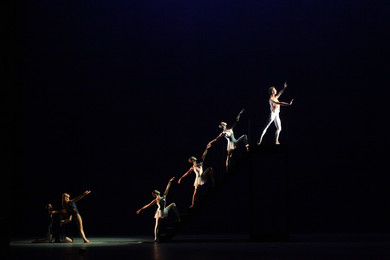New Stage
Premiere of this production: 29 Jun 2012 to music of Sergei Rakhmaninov’s Piano Concerto # 2 in C minor © Bolshoi Theatre © Photo by Yelena Fetisova/Bolshoi Theatre | ||||||||||
Main Stage
1 Teatralnaya ploschad (1 Theatre Square), Moscow, Russia
New Stage
Bol'shaya Dmitrovka Street, 4/2, Moscow, Russia


